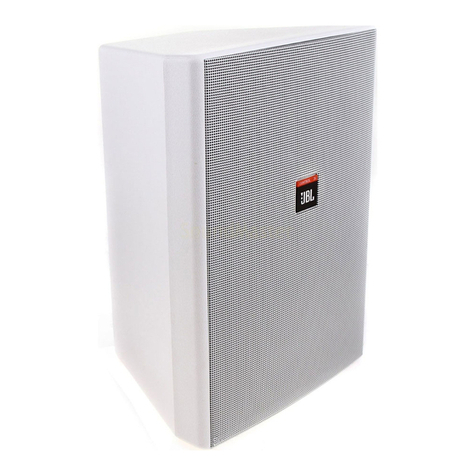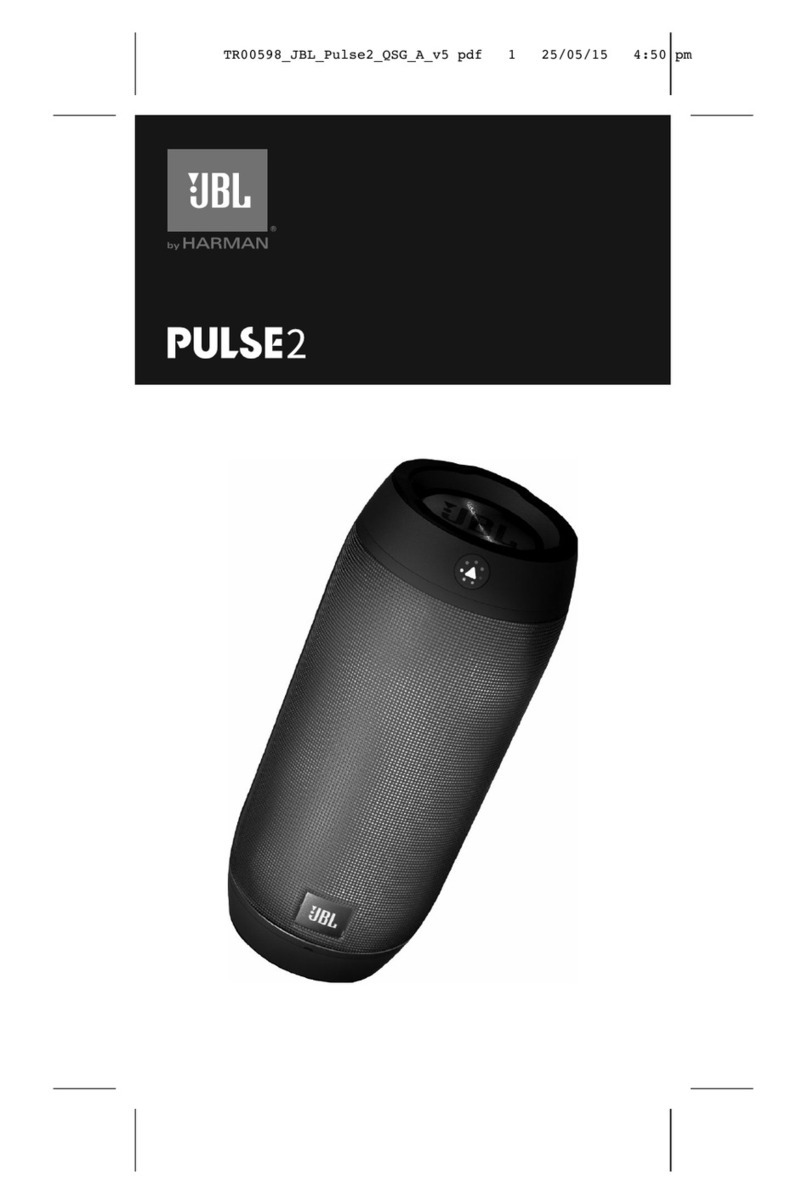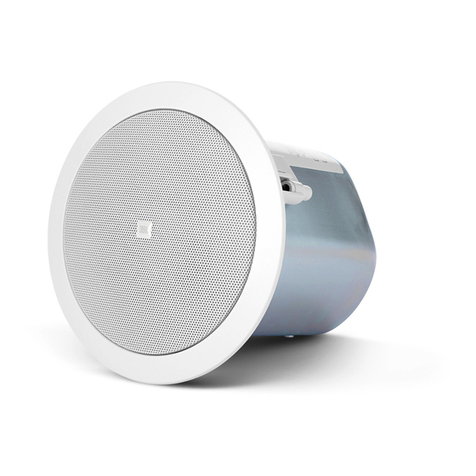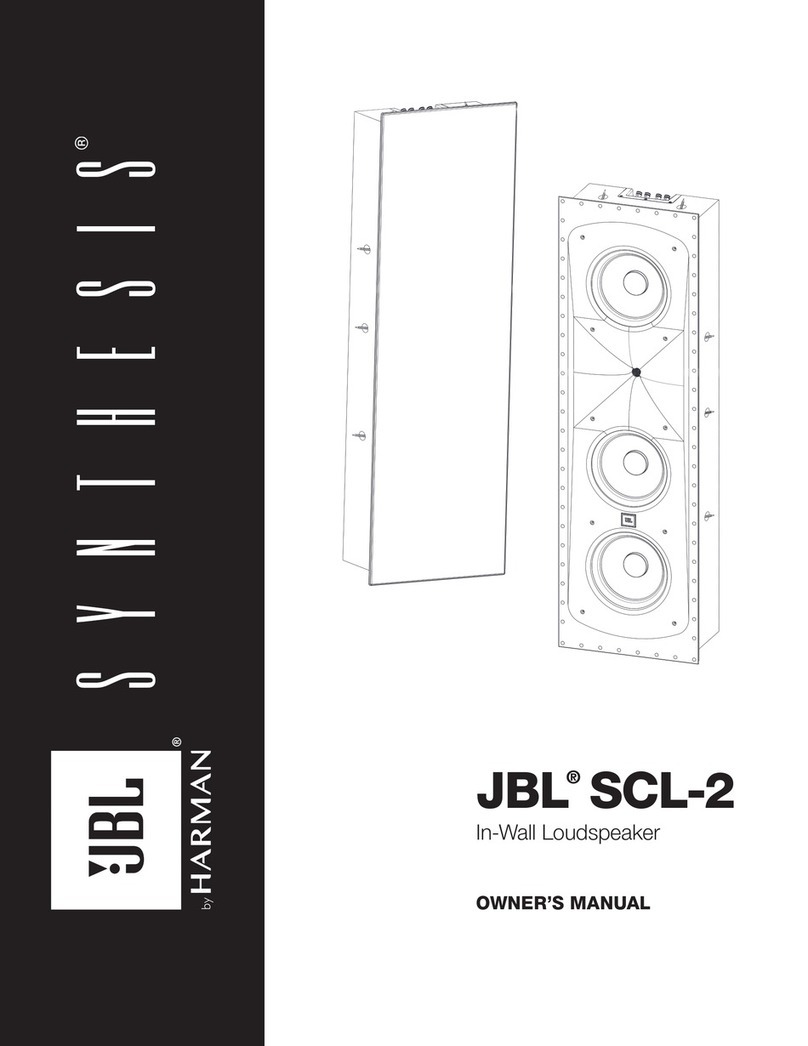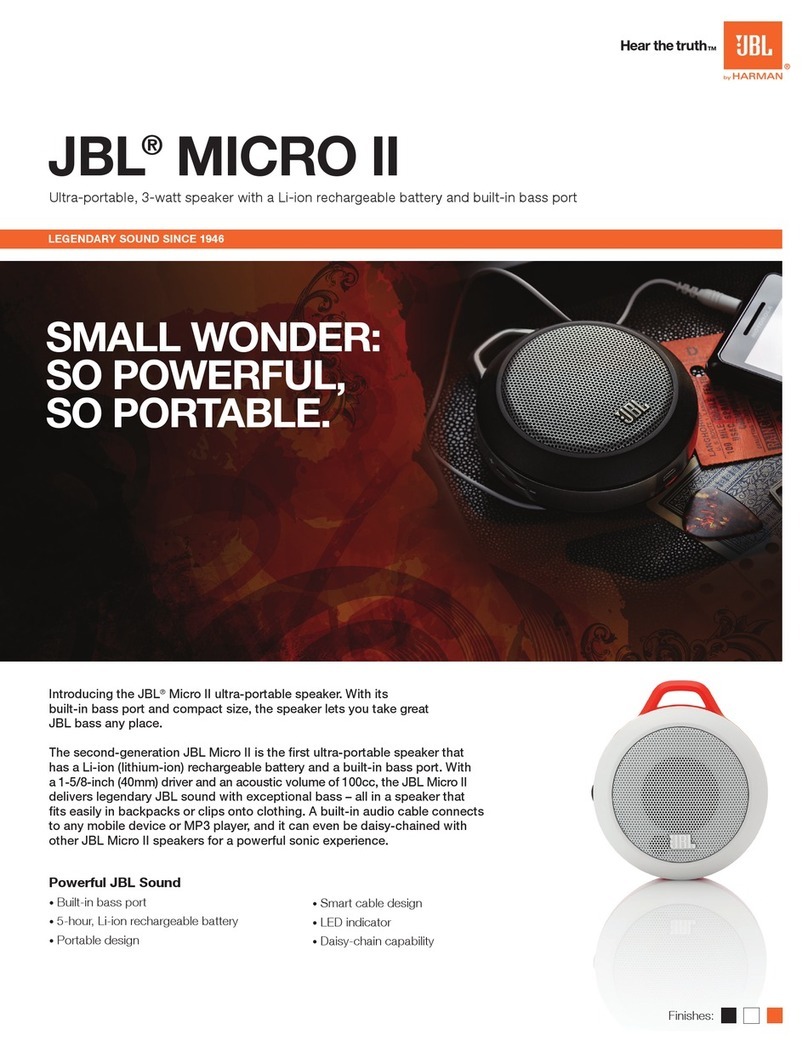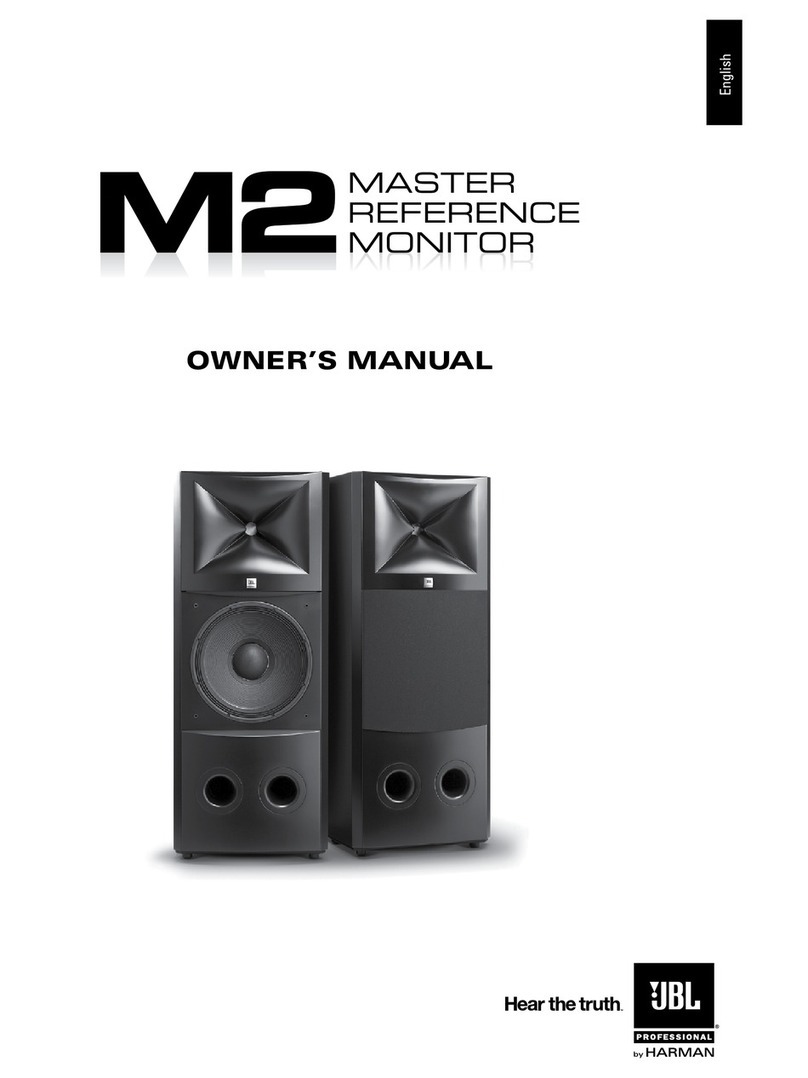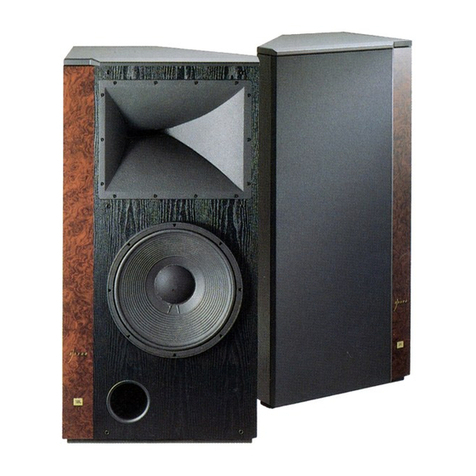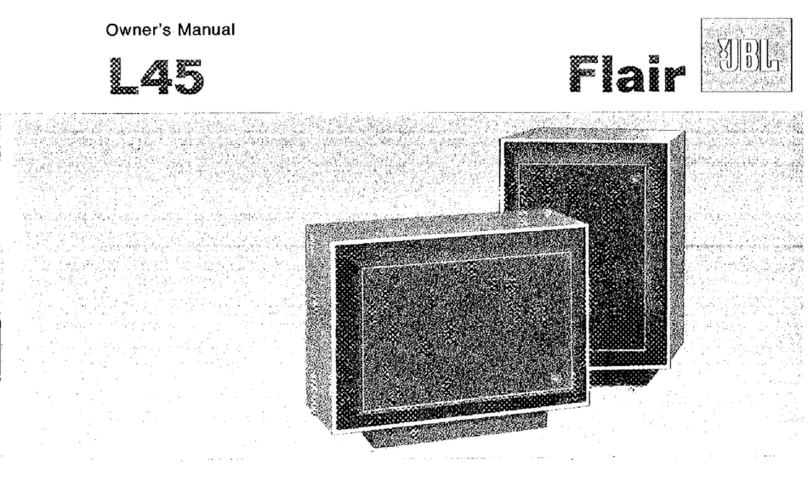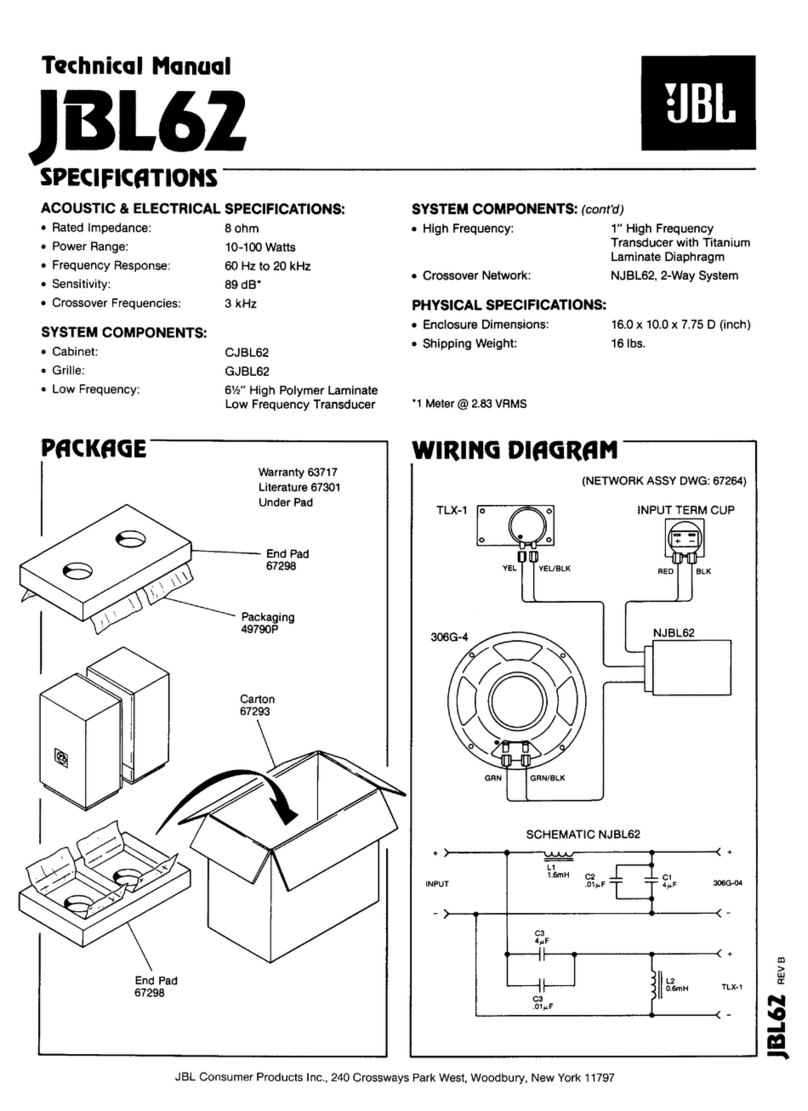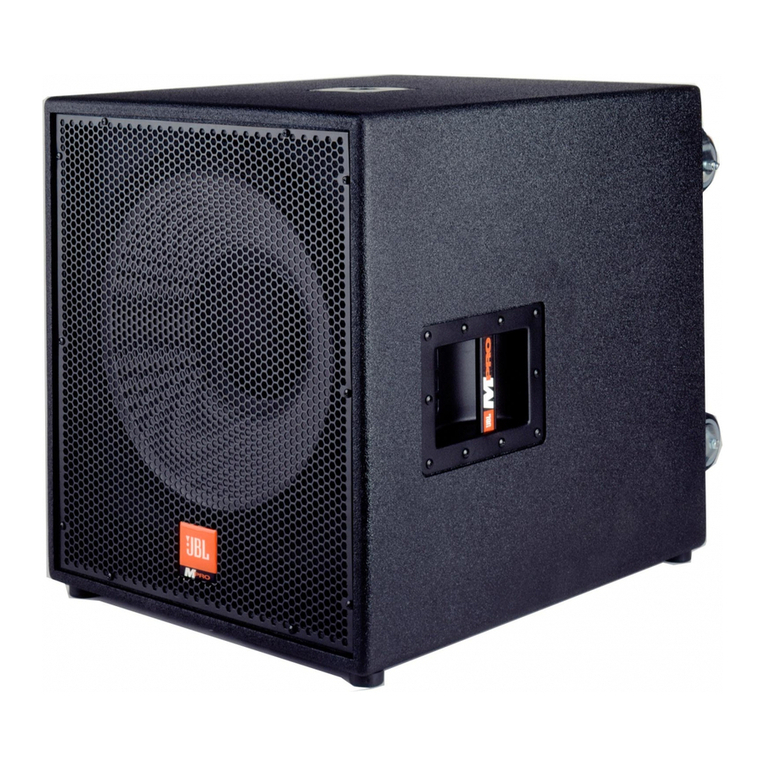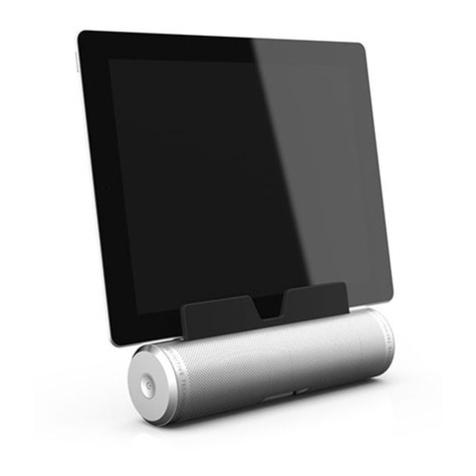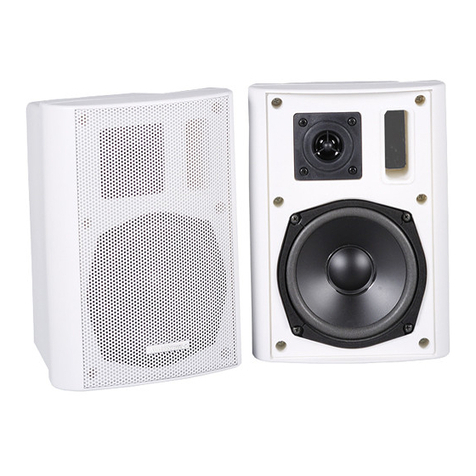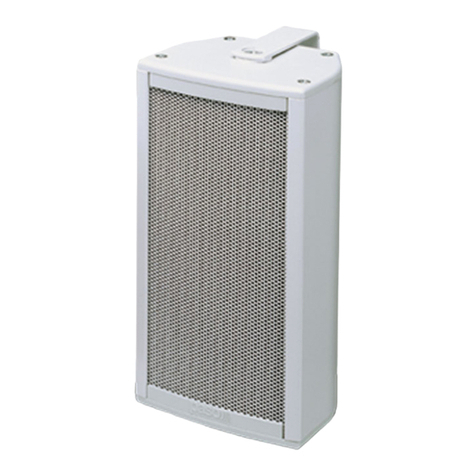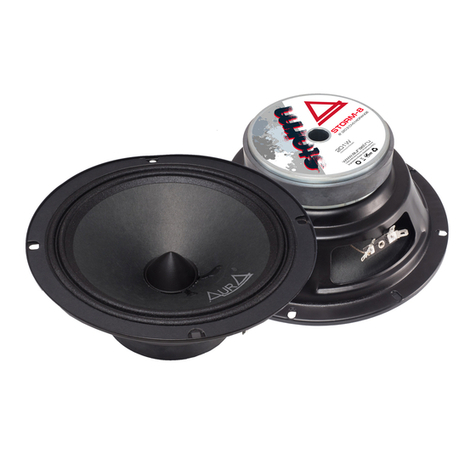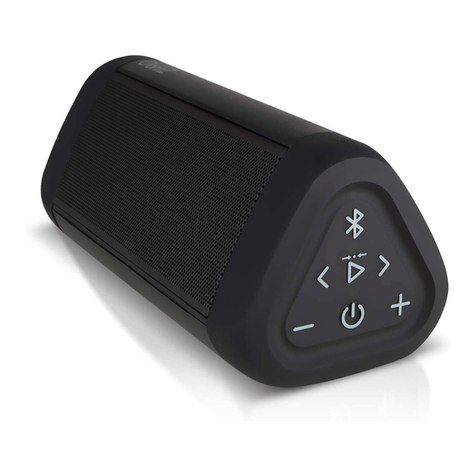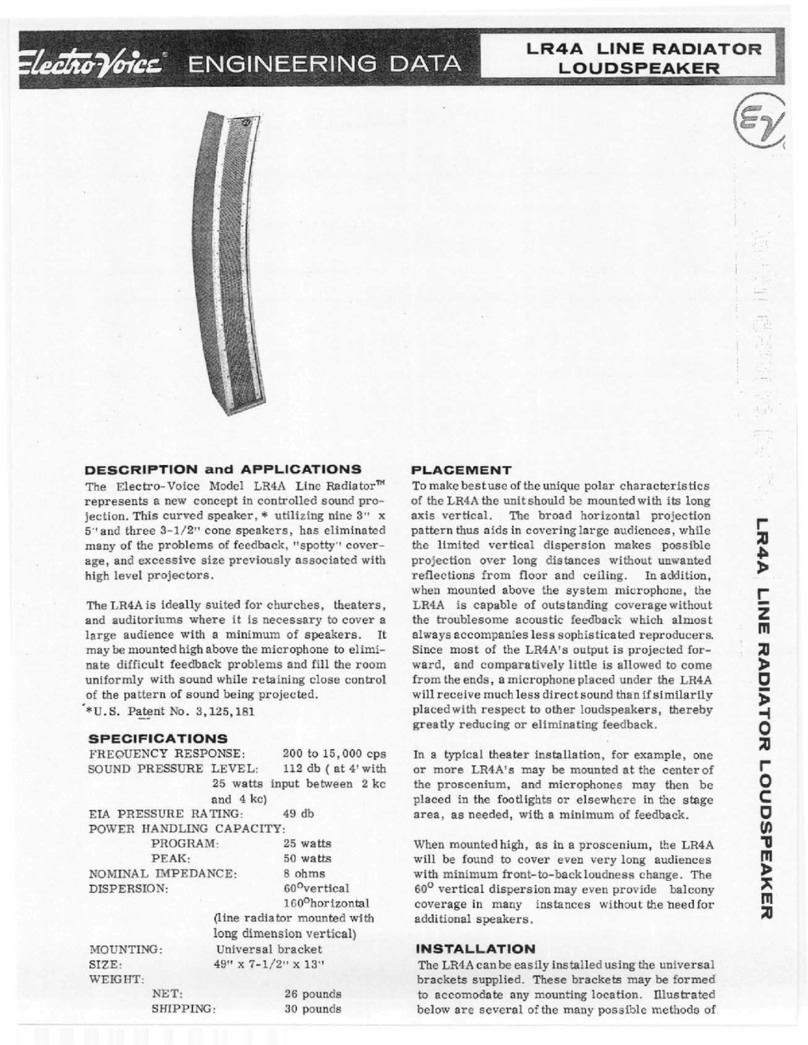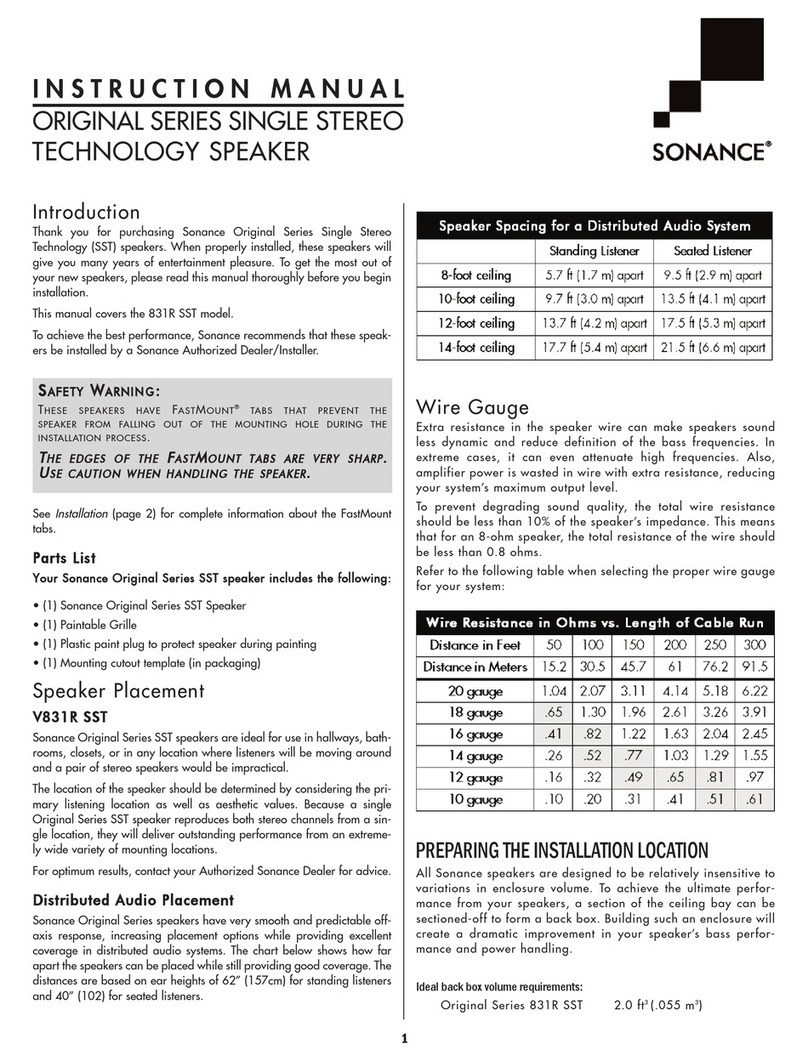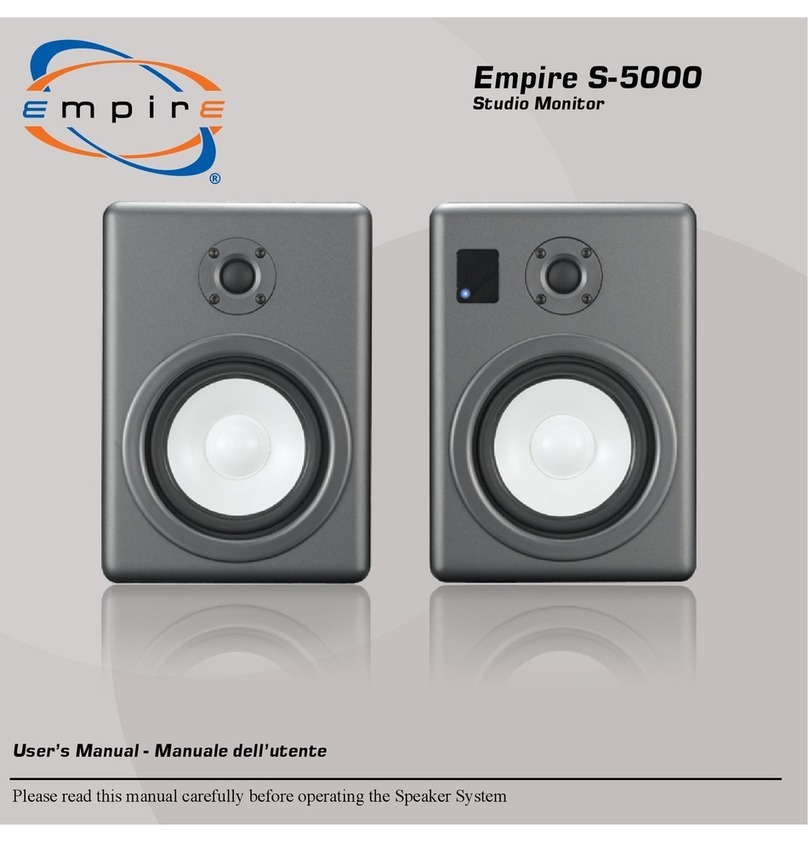
6
7.1-CHANNEL SYSTEMS
In a 7.1-channel system, two speakers are added for rear fill, in addition to the surround speakers in a 5.1-channel
system. The two additional speakers are placed on the rear wall or near the rear wall in the ceiling (Figure 8).
SIDE
LEFT
SIDE
RIGHT
REAR LEFT REAR RIGHT
Figure 8
GENERAL INSTALLATION NOTES
1. For best acoustic summation and smoothest frequency response at the listening position, align the center of
horn to be on-axis or slightly above the listeners’ ears.
2. Identify all wiring connections to rear enclosure and to baffle network.
3. Identify all wiring options (Bi-Wire, Bi-Amp, and Direct/Active).
CONNECTING THE SPEAKERS TO THE REST OF YOUR SYSTEM
To connect the Synthesis SCL-3 and SCL-4 loudspeakers to the power amplifiers or receiver, use two-conductor
insulated speaker wire. We recommend #14 AWG wire as a minimum size. Your JBL dealer can recommend the
correct gauge for your application.
Both the SCL-3 and SCL-4 utilize spring-loaded binding posts that can accommodate up to #10 AWG stranded wire.
PREPARING THE HOOK-UP WIRE
1. First determine the distance between your amplifier and the most distant speaker in each group (fronts,
surrounds, back surrounds, passive subwoofers).
2. Now make the hookup wires for all speakers in each group this length, even if one speaker is much closer to
your amplifier than the other. This will help maintain proper signal balance. Remember to make extra wires for
bi-amp or bi-wire usage should this be selected.
3. Strip off 3/8" of insulation from both ends of each conductor.
4. Twist each set of stranded wires into a tightly bunched spiral. Run wires through walls to the mounting positions.
5. Speakers and electronics terminals have corresponding (+) and (–) terminals. Most manufacturers of speakers
and electronics, including JBL, Inc., use red to denote the (+) terminal and black for the (–) terminal. Please
confirm before connecting.
It is important to connect all speakers identically: (+) on the speaker to (+) on the amplifier and (–) on the speaker to (–)
on the amplifier. Wiring “out of phase” (+ to - and - to +) results in thin sound, weak bass and poor imaging.
With multichannel surround sound systems, connecting all of the speakers in your system with the correct polarity
remains equally important to preserve the proper ambience and frequency response of the program material.
Now find a visual difference between the two conductors of each molded pair of speaker wires. Differentiating marks
can be a different color wire (copper or silver); a strand of yarn in one conductor; thin, raised ribs on one part of the
outer insulation; or a printed marking on one part of the outer insulation. It doesn’t matter which of the two strands go
to the (+) and (–) on the speakers and amplifiers, as long as all speakers are connected identically. When attaching to
the back box, push on the top of the spring-loaded post and insert the bare wire into the hole on the side.



